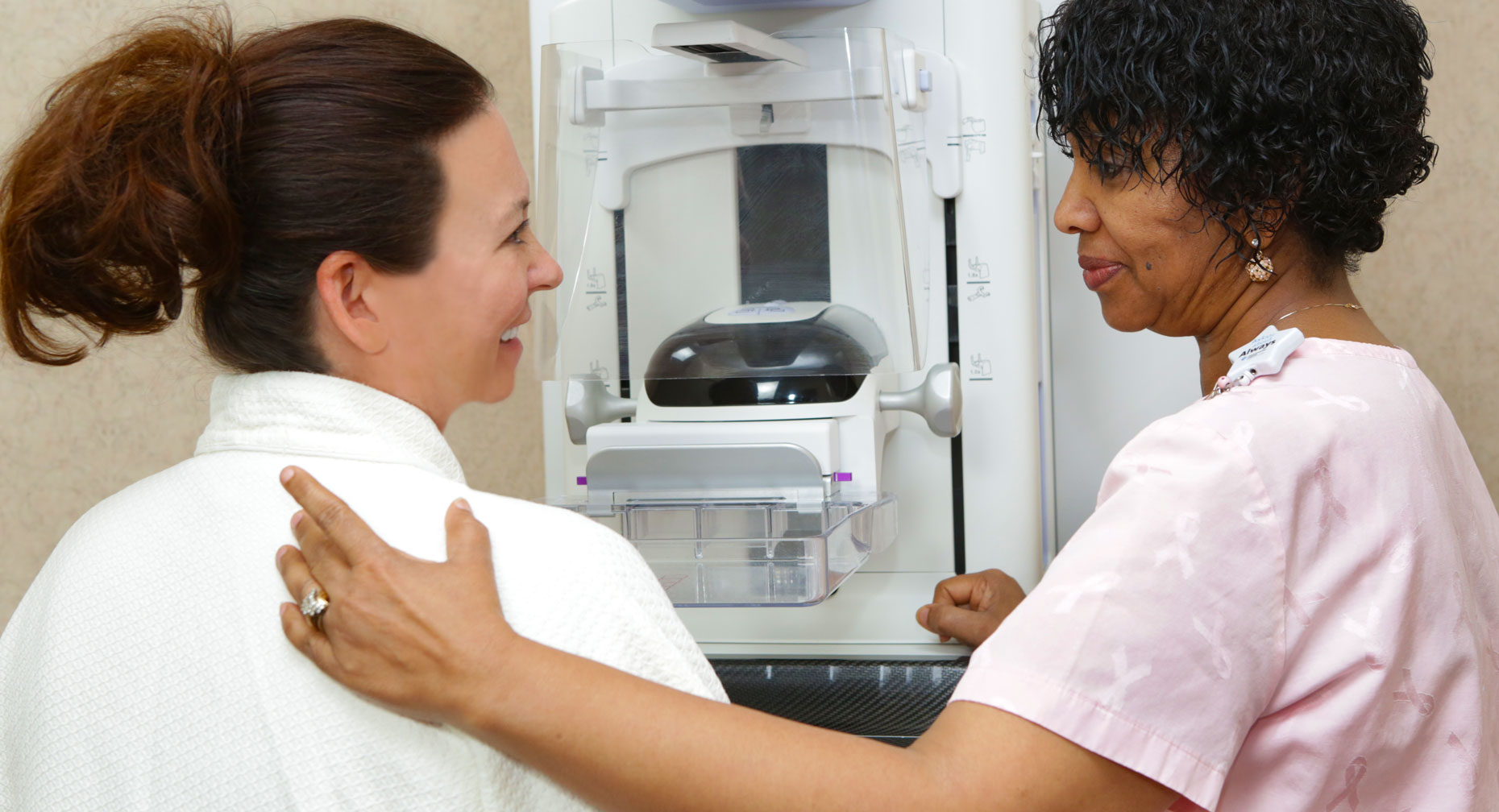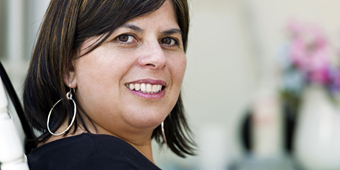Your First Mammogram: You Can Do This!

Schedule a Mammogram
Make time for your screening mammogram at a location and time that works for your busy life.
So it’s time for your first-ever mammogram. Nervous? That’s perfectly natural. When you don’t know what to expect, anxiety can kick in. Prepare yourself and help calm those nerves by learning what happens when you get a mammogram.
“Although you may be anxious, keep in mind that out of every 1,000 screening mammograms performed, only two to four breast cancers are diagnosed,” reports Diane Anderson, DO, radiologist and medical director of mammography at Upper Valley Medical Center.
Mammograms are an effective tool for detecting breast cancer before symptoms appear or lumps can be felt, she explains. When breast cancer is detected early, a woman may have more choices for treatment. In addition, treatment can be started earlier, possibly before the cancer has had a chance to spread. “Talk to your health care provider about your breast cancer risks and what age is best for you to get your first mammogram,” Dr. Anderson advises.
First things first. There are two types of mammograms:
- You go in for a screening mammogram when you don’t have breast symptoms or problems. X-ray images are taken of each breast to look for signs of breast cancer.
- A diagnostic mammogram takes place if a woman has breast symptoms (such as a lump, breast pain or discharge from the nipple), or if something abnormal or questionable is seen on a screening mammogram. Additional images of the breast or breasts may be taken that are not taken during a screening mammogram.
Today mammography centers take X-ray images using either digital or 3D mammography:
- Digital images allow for easy storage on computers and the ability to manipulate the image (i.e., enlarging the picture if needed).
- A newer 3D mammogram takes multiple images that are pieced together for a clearer and more complete view of the breast.
Before You Go
On the morning of your mammogram, when you’re getting yourself ready for your day, don’t apply deodorant, powder, lotion, perfume or ointment around your chest area or under your arms. These can show up on the X-ray as white spots, making the images more difficult to read. Don’t worry if you forget this step — you’ll have the opportunity at the mammography center to clean up before your mammogram is taken.
When you’re getting dressed, choose a skirt or pants with a top that’s easy to get in and out of. You’ll need to undress from the waist up for your mammogram, so save your dress for another day.
If you’re still having your monthly cycles, try scheduling your first mammogram for the week after your period. Your breasts will usually be less tender during that time.
If you have breast implants, tell the mammography center this when you schedule your appointment.
Keep in mind that out of every 1,000 screening mammograms performed, just two to four lead to a breast cancer diagnosis, according to the American Cancer Society.
Once You’re There
First check in and fill out any necessary paperwork.
Then you’ll be taken to get ready for the mammogram. You’ll undress from the waist up and put on a gown. Most mammography centers have private changing areas for this. A registered mammography technologist will take you to a room for your mammogram. Just you and the technologist will be in the room together.
You’ll be positioned to stand in front of the mammogram machine. The technologist will take images of each breast in different positions.

The mammogram machine has two flat paddles that are used to compress or squeeze your breasts. The reason for the compression is to spread the breast tissue apart and to hold your breast tissue still for the pictures. That allows a lower dose of radiation to be used and also provides a better image of your breast tissue for the radiologist, the doctor who will review your mammogram images.
You’ll remove your gown from one arm and the technologist will position your breast onto the paddle. This may take a few moments as the technologist finds the best position possible to get the best image possible. She’ll also have you move your head and arms for optimal positioning (you might feel like you’re hugging the mammogram machine at one point). The second paddle will be moved in to squeeze your breast. The technologist will ask you to hold your breath while she obtains your mammogram images. This process will then be repeated for the other views of your breast.
If an image comes out unclear or shows motion, the technologist may reposition your breast and repeat the image.
The whole process takes about 20 minutes. Your breasts are only compressed for a few seconds for each picture while the images are being taken.
Different women experience different levels of discomfort during mammograms. You might find it tolerable, uncomfortable or painful. Tell the technologist if you’re in too much pain.
Afterwards
Once the images have been taken, you’ll get dressed and your appointment is complete.
A radiologist will read your mammogram images, looking for areas of the breast that are questionable or suspicious. For future mammograms after your first, the radiologist will compare your mammogram to the previous studies to look for any changes in the breast tissue.
The mammography center sends your results to your health care provider and will notify you of your results by mail, email or in MyChart. Your health care provider may call you with results, especially if there is a questionable or suspicious area on any of the images.
If there is an area of concern, you may be called back for additional X-rays, a follow-up mammogram, a breast ultrasound and/or a breast biopsy. Learn more about these diagnostic tests.
To schedule your mammogram visit premierhealth.com/mammo.
Schedule a Mammogram
Make time for your screening mammogram at a location and time that works for your busy life.
Source: Diane Anderson, DO; American Cancer Society; National Cancer Institute; Breastcancer.org





